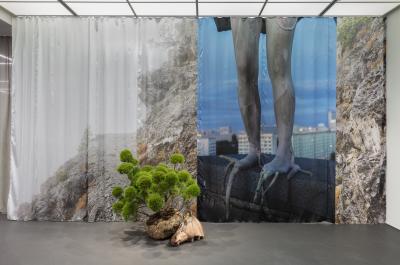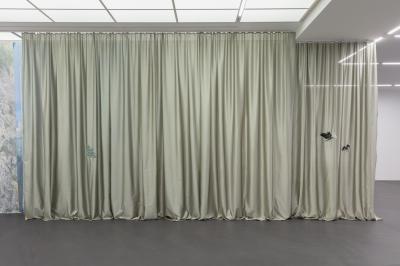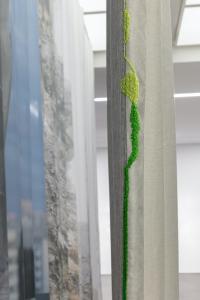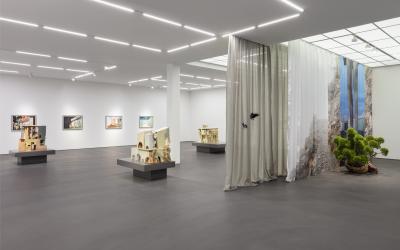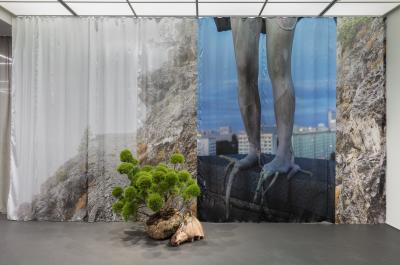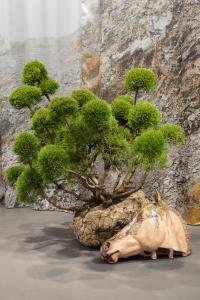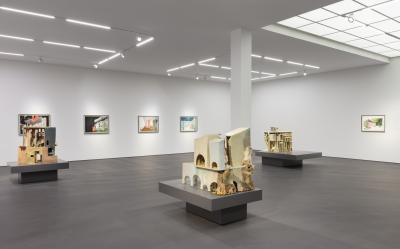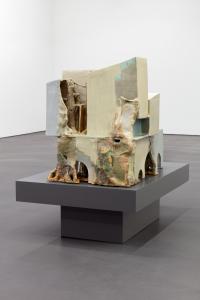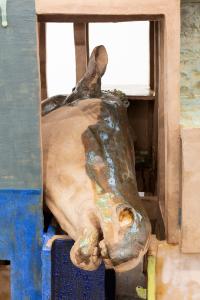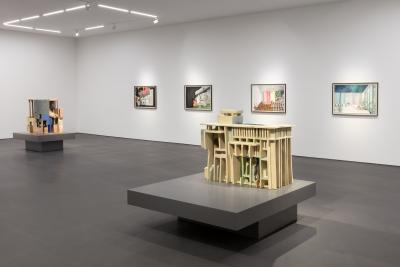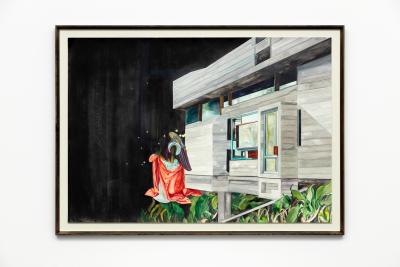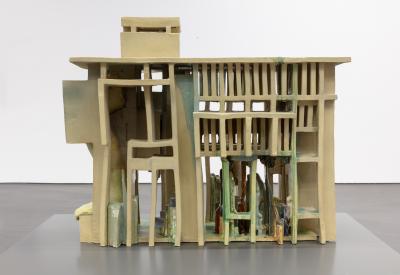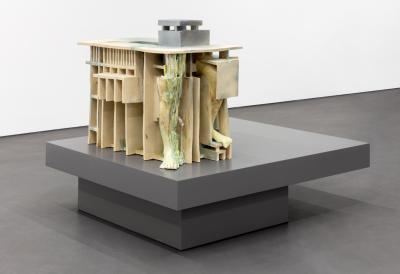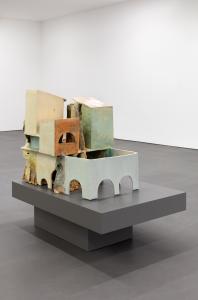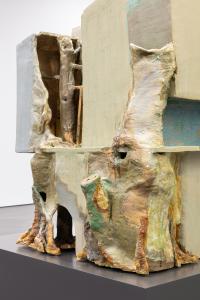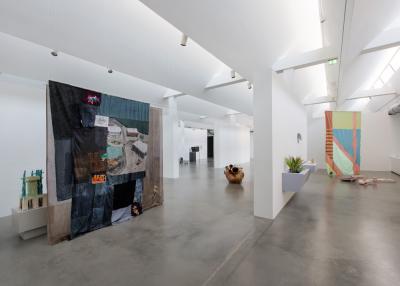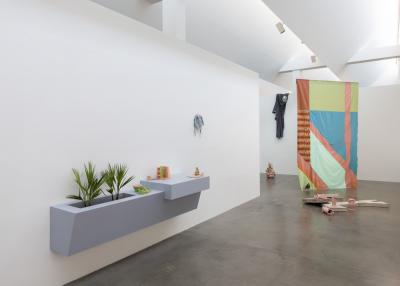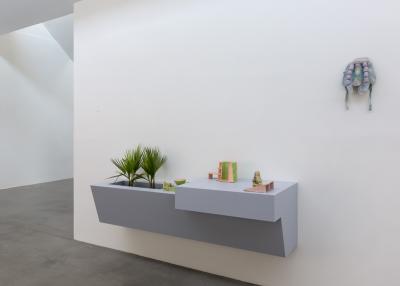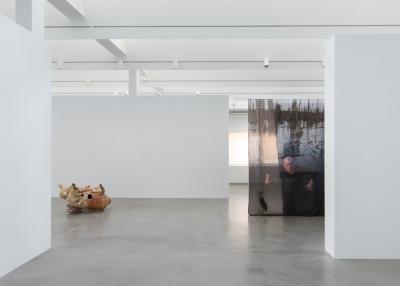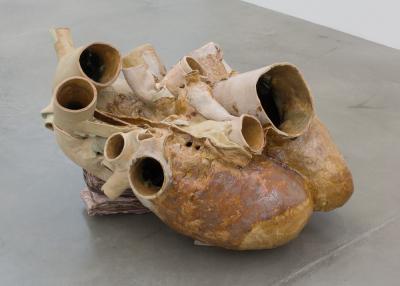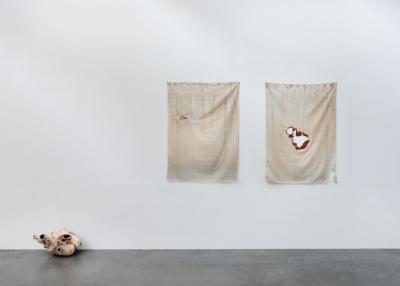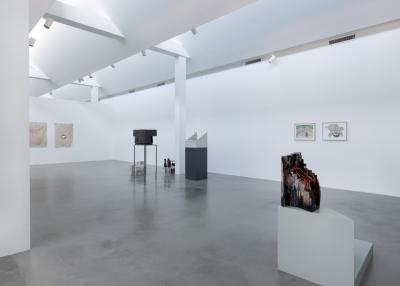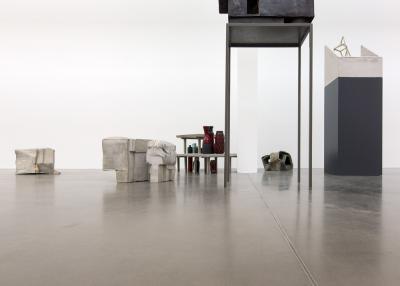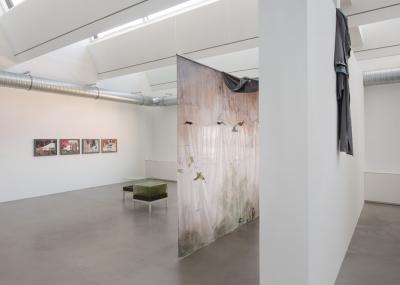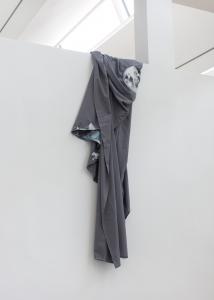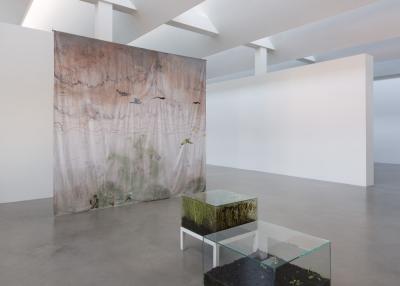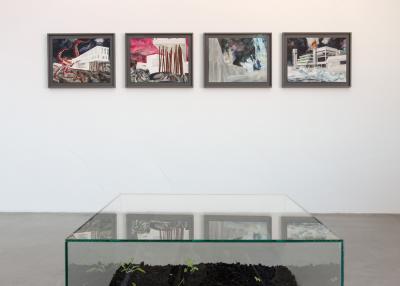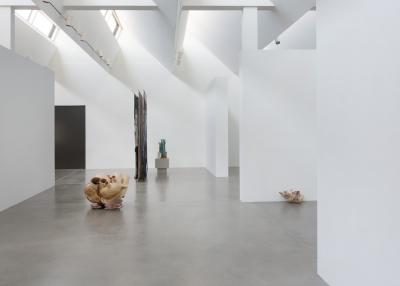In her solo exhibition Der unerfreuliche Zustand der Textur (Predicament of Texture) in the Maschinenhaus M2 at the KINDL – Centre for Contemporary Art, the artist Isa Melsheimer is presenting various series of works from recent years, including concrete sculptures, ceramics, textile works, gouaches, ensembles with living plants, as well as her only video work to date, Wasserballett für Marl (2017). Melsheimer’s oeuvre revolves around architectural and urban topics. One focus is modernist and postmodernist architecture and their underlying conceptions of human beings and nature, built space, and society. She finds inspiration for her work in literature, film, popular culture, and academic texts, including the book Staying with the Trouble by the American science theorist and feminist Donna J. Haraway, who foresees the need for new relationships and interferences between humans, machines, animals, and plants for life on the destroyed earth in the Chthulucene era. In interaction with the architecture of the Maschinenhaus M2, the placement of three ceramic whale hearts begins a narrative that connects individual series of works in the exhibition space through specific aspects. Walherz, Walherz (Jordan), and Walherz (Squish) (all 2018) resulted from the artist’s impressions during a fellowship on the island of Fogo in Newfoundland. Here she observed whales and conducted research on the life of marine mammals. This led her to the sensational journey of a 300-kilogram blue whale heart, which was transported from Newfoundland to Brandenburg to be plastinated in 2015 before returning to Canada. Melsheimer engaged in depth with the history of the island, the ecological and economic consequences of overfishing, the effects of global warming, and the icebergs that pass by in the spring, which are marketed as a tourist attraction. This resulted in works such as the gouache Nr. 437 (2017), in which the luxurious Fogo Island Inn is attacked by an enormous octopus, and the embroidered Curtain (Year of the Whale) (2018), which captures the artist’s view from her studio and at the same time points to the landscape, including indigenous plants and animals such as the humpback whale and cod—both of which are now nearly extinct in the region. The work Wardscher Kasten (Fogo Island) (2018) is based on the mobile greenhouses developed by Nathanial Bagshaw Ward in 1830—ideal containers for transporting plants from distant colonies to imperial England. The moisture that condenses on the glass walls of the hermetically sealed systems allows the plants to grow without additional inputs. For her miniature biotopes Isa Melsheimer uses
seeds that she collected on Fogo Island or—for the new version Wardscher Kasten (Palermo) (2020)—in the Botanical Garden of Palermo. In the spirit of Haraway’s “new relationships,” works such as Peene Valley (2019) and Afterlife (2019) meld cubic ceramic architectures with plant or animal shapes. Melsheimer thus takes up the architecttural utopias of Japanese Metabolism—a movement in the late 1950s and 1960s that called for the fusion of architecture and biological material and designed functionally composed living modules based on living things such as fungi, plants, and cells. The model-house-like sculptures made of concrete and ceramic which are grouped together like a cityscape in the exhibition space question and comment on urban living spaces and their cultural codes in a specific way. The two concrete floors from Frei Otto / westliches Haus (2012) are based on the floor plan of the well-known eco-house in the Tiergarten district of Berlin whose individual cubeshaped modules were designed according to their residents’ needs. 0-House I and 0-House II (both 2012) take up the idea of the Japanese Zero Yen Houses: highly functional miniature dwellings such as boxes, consisting of collected materials, inspired by the makeshift huts of (formerly) homeless people. In her video work Wasserballett für Marl (2017), the artist places Brutalism, which has long been widely perceived in a negative light, in a new, poetic context. The prosperity of the city of Marl in the northern Ruhr area led to the construction of a modernist town hall in the Brutalist style in the 1960s. In the pool in front of the building, which the artist had cleaned and filled, she staged a water ballet
with six dancers in unisex swimwear and masks that she made specifically for the performance. The exhibition also presents a nuanced engagement with postmodernism. The title Der unerfreuliche Zustand der Textur (Predicament of Texture) is a reference to a chapter title from Collage City (1978), a critical work by Colin Rowes and Fred Koetters on modernist urban planning and its approach of “total design.” In her installation Tea and Coffee Piazza d’Italia in Post-Katrina Times (2013), the artist distances herself from postmodernism and points to its failure in the teapots and sugar bowls of the Tea and Coffee Piazza project by Alessi. In the form of a wall sculpture that serves as a furnishing for the presentation of small ceramics and two fan palms, Melsheimer’s new installation oT (2020) transports this thematic complex from public space to the interior. Isa Melsheimer’s gaze is always directed at the present: in the exhibition she brings together various discourses from different periods in order to link them from today’s perspective, question them, and thus make the change within our society visible.
The exhibition is curated by Kathrin Becker.

